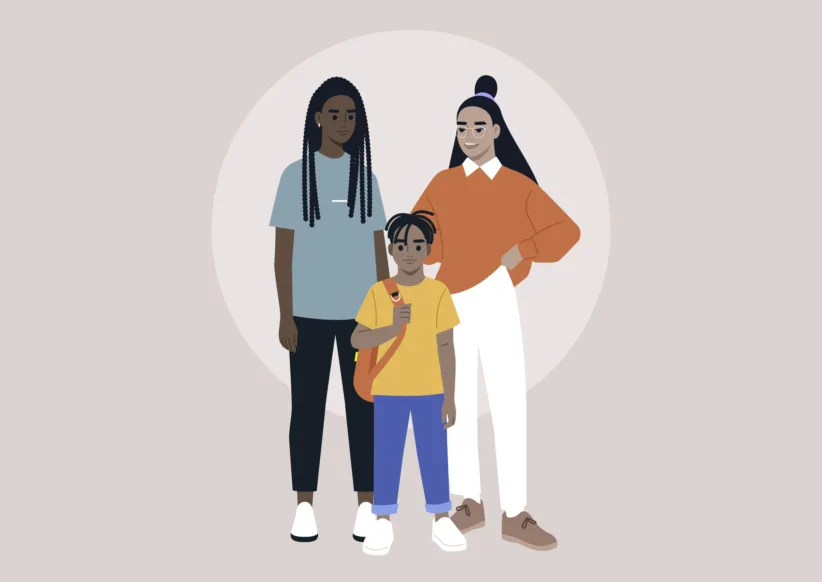Divorce is hard on adults and children alike. But, unlike adults, children have little or no say in what happens. Even if you were not the one to initiate the divorce, undoubtably there are many decisions you will make, perhaps including whether to remain at your current job, and which neighborhood you will live in. Our kids, on the other hand, will live and attend school where we (or a judge) decides.
None of us likes to feel out of control, and where we can, it is wise to grant our children the power to make their own decisions — up to a point.
Let’s take the example of a new home.
Pretend that you have agreed to move from the marital home. As the adult, where you live has to be up to you. It is your job to know your finances — or to get help in understanding them if you don’t. What neighborhoods can you afford? Will you rent a home, or buy one? How close to work or public transportation do you need to be? Where are the schools, doctors, and houses of worship that you deem best for your family? The list of considerations can be lengthy.
Then there are other matters — ones that children (depending upon their ages) can decide, within the boundaries that you define.
Here are some of the things that I did to help my daughter (then 6) feel that the new home we were moving into was hers, and not just mine:
Before actually moving in, I asked my daughter if she wanted to see the apartment before furniture arrived. Not only did she say “yes,” but her mother joined us for the initial visit, implicitly giving our daughter a message of support regarding our new home.
My daughter led us around the apartment, showing us the different rooms. She wanted to play hide-and-seek, and the premises being safe, we did. She asked if a particular closet could be used as our “art closet” — a home for markers, crayons, and construction paper — and I enthusiastically agreed; seven years later, it continues to serve that purpose.
I gave my daughter the opportunity to choose the color for the carpet in her room, and she was happy to do so. (She would have chosen for the entire apartment, but that was too much for me.)
She decided on the bed she wanted, again, because she wanted to do so. My daughter also helped to make decisions on what pictures and posters would adorn the walls of her room, our refrigerator, and the inside of the front door. We picked up a shower curtain that she liked — colorful and fun with an aquatic theme, another imprint of hers on our new home.
The games and books that remained at her mother’s house stayed there for the most part, because those were the ones she chose to keep there; the ones she wanted by us, we brought.
Additional factors eased the transition. The then-new apartment was in the same neighborhood as the old; in fact, only a block away. My daughter was able to go to the same school, keep the same friends, and continue to visit her grandparents frequently. If something is forgotten or wanted from the other home, a phone call and a short walk take care of the problem. Being Sabbath observers, the close proximity of our daughter’s two homes allows her to be with both Mom and Dad on the same Saturday, and on other religious holidays, when we don’t drive.
We are all individuals, and our children are unique. The steps that I took might not be possible or desirable in your situation. Still, the bottom line is that we, as parents, can do a great deal to make the transition from living in one home to two homes more comfortable and less scary for our children. Part of this unquestionably difficult experience can even be fun and empowering for them, if we are thoughtful and creative, and plan well.
Lee Chabin, Esq., a divorce mediator and collaborative divorce lawyer, helps clients end their relationships respectfully and without going to court. Contact him at [email protected], by phone at (718) 229-6149, or go to lc-mediate.com/home.





















